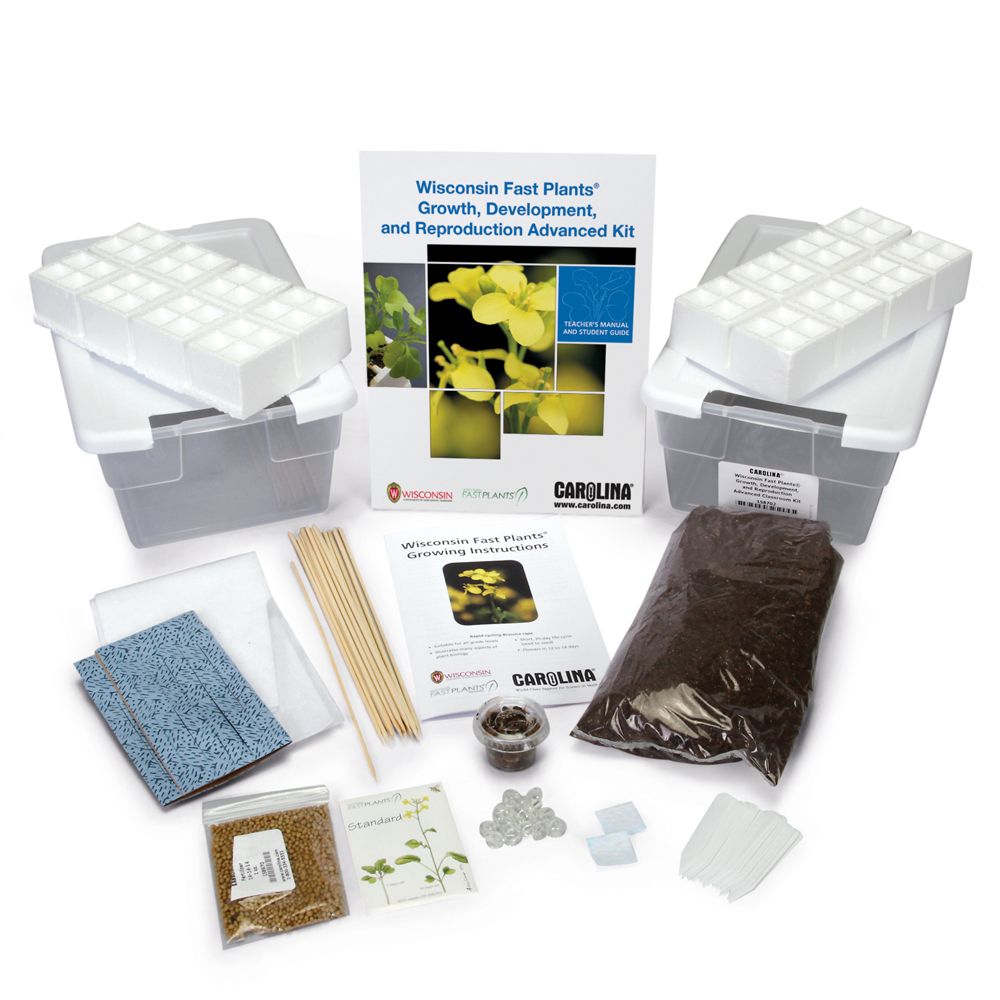When preparing to teach your class about populations and the interdependence of organisms, consider incorporating the honeybee into your lesson plans. This small, undervalued insect is a keystone species in many environments. But we often overlook our dependence on honeybees’ survival, even while their interesting community behavior and the important ecosystem services they provide are under attack. An alarming decline in populations of honeybees, a phenomenon called colony collapse disorder (CCD), has forced researchers worldwide to examine the causes and effects of this decline.
Basics about bees
The intricate dynamics of a bee colony is an ideal topic for teaching about populations and communities. Nests may contain over 20,000 honeybees. Three castes of bees, each with a different role, are always present in a thriving nest. The workers, all females, have many roles such as gathering pollen and nectar outside of the nest, tending to larvae and the queen, and building the honeycomb. Drones are the only males in the colony, and their sole purpose is to mate with the queen. Only a few hundred drones are present in a colony at a given time and after mating with the queen, they die. The queen is the only sexually mature female and exists solely for producing more offspring with the drones. Communication within these large colonies is highly evolved. Worker bees communicate by dancing. Foraging workers’ dances can communicate the location (distance and direction) of a nectar source and alert other workers to the need for more foragers. Workers tending the larvae and food stores dance to alert foraging workers that they need more help in the nest.
Honeybees help humans
While the structure and behavior of a colony is central when discussing populations of honeybees, their vital role in the ecosystem and other species’ dependence on these insects is also a great teaching topic. Bees are critical pollinators for many plants. While foraging, honeybees collect both pollen and nectar from the flowers they visit. The pollen is gathered and placed into “pollen baskets” on their hind legs, while they ingest and store nectar in their “honey stomach.” Once foraging worker bees return to the nest, they regurgitate the nectar to the nest-attending worker bees, who then store it in the comb for later consumption. This regurgitated nectar eventually becomes the sweet honey other species love. Pollen is also stored in the comb and used to nourish growing larvae.
How do they do it?
The foraging female workers move from flower to flower, gathering nectar and pollen, and may visit up to 100 different flowers during a single trip outside the nest. While collecting their food supply, they passively transfer pollen that sticks to their furry bodies from anthers (male reproductive organs) of a plant to the stigma (female reproductive organs) of other plants. The bees play a central role in this cross-pollination, ensuring that reproduction occurs in plants that do not self-pollinate and that new seedlings develop, often inside fruit.
What is it worth?
This passive act of moving pollen from 1 plant to another is responsible for over $15 billion in crops every year. Honeybees directly or indirectly affect 1/3 of everything humans eat. Almonds, blueberries, apples, soybeans, and many other fruits and vegetables depend on honeybee pollination. Alfalfa, a main staple of cows, is also dependent on this transfer of pollen. Therefore, the beef industry indirectly relies on the honeybee. If these tiny insects disappeared, a significant reduction in the available diet of many animals would occur. The vital pollination role for this keystone species has become a trade in the US. Beekeepers transport their hives in large trucks across America, renting their honeybees’ services to farm and orchard owners. The beekeepers place hives throughout fields and orchards during flowering season. The bees perform their day-to-day activities while cross-pollinating the surrounding plants and trees, thereby ensuring the growth of the farm or orchard owner’s crops. In 2011, estimates showed that beekeepers maintained over 2.68 million colonies.
What is killing them?
In 2006, beekeepers across the US were distraught to find that their honeybees were disappearing. From 30 to 90% of their bees disappeared from individual hives during the winter months of late 2006 and early 2007. Usually the hives still contained the queen and the larvae, but the workers had completely vanished. In some instances, the beekeeper found a few dead bees near the hive. Although there was notice of a decline in populations in years past, this strange disappearance was previously unseen. Scientists termed the phenomenon colony collapse disorder.
During this time frame, beekeepers across the US lost a total of 32% of their honeybees. This statistic has not improved over the years, but instead the loss has remained somewhat steady. In the winter of 2007–08, 36% of the total managed honeybees in the US were lost and 30% were lost in the winter of 2010–11. These losses were alarming to the beekeeping and crop industries. The United States Department of Agriculture (USDA), in response, formed the CCD Steering Committee to focus on research, data collection, analysis, and prevention measures to reduce the spread of CCD. Twenty million dollars was set aside to fund these efforts, but after years of research, the cause of CCD is still unknown. Researchers have narrowed the list of causes, continuing their research of invasive Varroa mites; diseases and viruses, such as Israeli Acute Paralysis; poisoning from pesticides used on crops or in hives to deter hive-dwelling mites that infect the bees; stresses from beekeepers’ management techniques; decreased nutrition; and habitat modification in foraging areas. Many researchers believe it is not 1 factor but a combination of the above factors that has resulted in CCD.
While research continues and many hypotheses—such as cell phone tower interference disrupting bee-foraging flights—have been disproved, 1 thing is still certain: a continued decline in the honeybee population will negatively affect many ecosystems and the US food industry. The importance of this keystone species and its slow demise are surely topics that will catch your students’ attention. Our overlooked dependence on honeybees might make your students think twice about killing a bee in their backyard.
Want to incorporate a hands-on pollination activity in your class?
Carolina’s Wisconsin Fast Plants® Growth, Development, and Reproduction Classroom Kit allows students to demonstrate pollination using dried bees. With this kit, students cross-pollinate flowers using the furry thorax of dried bees. Students can explore the honeybee anatomy in more depth using the Honey Bee microscope slide, which shows the wings and pollen sacs on the hind legs of a honeybee.











1 Comment
Excellent